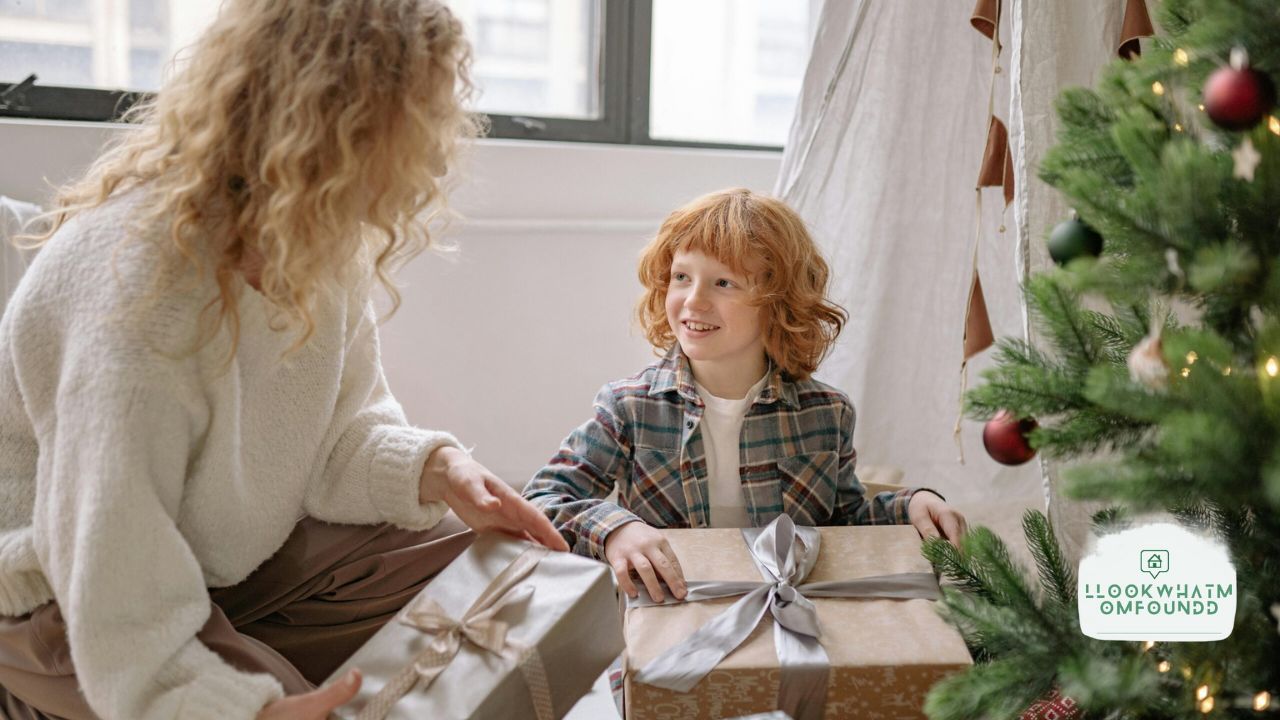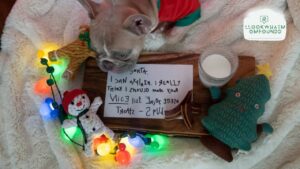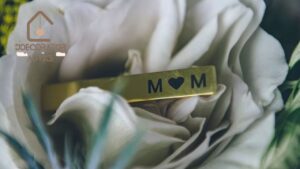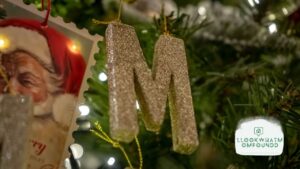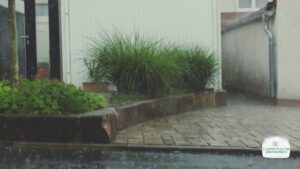There’s a special kind of magic that unfolds when someone exclaims, “look what mom found!” It’s a phrase that often signals the start of an amazing story, the unearthing of a forgotten memory, or the discovery of an unexpected treasure. This experience isn’t just about finding old objects; it’s about reconnecting with the past, celebrating resourcefulness, and discovering the hidden value in everyday life.
This journey into the world of “look what mom found” explores the thrill of the hunt, from dusty attics to bustling flea markets. We’ll delve into the stories behind these incredible discoveries, understand their potential value, and learn how you can start your own adventure of finding hidden gems. It’s a testament to the keen eye and sentimental heart that often leads to the most wonderful surprises.
This phenomenon has grown from a simple family phrase into a cultural touchstone, representing everything from clever bargain hunting to the rediscovery of priceless heirlooms. The excitement is universal, a shared joy in seeing something overlooked transformed into something cherished.
Quick Guide to “Look What Mom Found”
| Feature | Description |
|---|---|
| Concept | The act of discovering valuable, interesting, or sentimental items unexpectedly, often by a motherly figure. |
| Common Locations | Attics, basements, garage sales, thrift stores, flea markets, antique shops, and even forgotten closets. |
| Types of Finds | Vintage clothing, antique furniture, rare collectibles, forgotten family photos, valuable jewelry, first-edition books. |
| Core Appeal | The thrill of discovery, connection to history, potential for financial gain, and the joy of storytelling. |
| Community Aspect | Sharing finds online, connecting with other enthusiasts, and seeking appraisal or identification help. |
The Heart of the Discovery: What Does “Look What Mom Found” Really Mean?
At its core, the phrase “look what mom found” is an announcement of pure, unadulterated surprise. It’s a moment frozen in time where the mundane gives way to the extraordinary. But what makes these moments so powerful? It’s a blend of nostalgia, curiosity, and the inherent value—sentimental or monetary—of the object discovered.
Think about the last time you heard it. Perhaps your mother was cleaning out the attic and stumbled upon your grandfather’s old watch, long thought to be lost. Or maybe she was browsing a thrift store and her expert eye caught a designer handbag mixed in with worn-out totes. Each “look what mom found” story is a miniature adventure.
This isn’t just about the physical item. It’s about the story that comes with it. A dusty box of letters reveals a family history you never knew. An old vinyl record brings back the sound of a grandparent’s living room. These discoveries are threads connecting us to our personal and collective pasts, making them profoundly meaningful.
The Psychology Behind the Thrill
Why do we get such a rush from these finds? It taps into our primal instinct for treasure hunting. Our brains are wired to feel pleasure from unexpected rewards. This “reward uncertainty” creates a dopamine spike that is incredibly satisfying.
When your mom holds up a dusty, forgotten object, there’s a moment of suspense. Is it junk or a gem? That uncertainty, followed by the joyful realization of its worth, is a powerful emotional cocktail. It’s the same feeling that drives people to play the lottery or pan for gold. The “look what mom found” experience brings this adventure right into our homes.
Moreover, these discoveries often reinforce a sense of family connection and continuity. Finding something that belonged to a relative creates a tangible link to them, making their memory feel closer and more real. It’s a beautiful way to honor their legacy.
From Attic Dust to Digital Fame: The Rise of a Phenomenon
What started as a private family moment has exploded into a massive online trend. Social media platforms are now flooded with posts, videos, and entire communities dedicated to the “look what mom found” theme. People are eager to share their amazing discoveries and celebrate the finds of others.
This digital shift has transformed personal treasure hunting into a shared, global experience. Enthusiasts from all corners of the world can connect, compare notes, and offer advice. It has created a supportive and enthusiastic community built around the joy of a great find.
The Power of Social Sharing
Platforms like TikTok, Instagram, and Reddit have become virtual show-and-tell forums. A user might post a video with the caption, “Cleaning out grandma’s house and look what mom found!” The video then reveals a stunning piece of mid-century modern furniture, a collection of rare comic books, or a vintage Chanel suit.
These posts often go viral, garnering millions of views and sparking conversations. Viewers share their own similar experiences, offer tips on cleaning or restoring the item, and speculate on its value. This communal aspect adds another layer of excitement to the discovery process. A simple “look what mom found” post can suddenly connect you with a global network of experts and fellow treasure hunters.
User reviews and comments on these posts are overwhelmingly positive, filled with awe and excitement.
- User Review: @VintageVibes92 ★★★★★
- “I live for these videos! My mom is a thrift store queen, and seeing other people share their ‘look what mom found’ moments is so inspiring. It’s a reminder that treasure is everywhere if you just look for it.”
- User Review: @HistoryHunter01 ★★★★★
- “The historical aspect is what gets me. Someone posted about finding their great-grandfather’s WWI dog tags. That’s not just a find; it’s a piece of history. Incredibly moving.”
The viral nature of these stories has also had a practical effect. It has raised awareness about the potential value lurking in our own homes. More people are now thinking twice before tossing out old items, wondering if they might be sitting on a hidden gem.
The Stars of the Show: Profiles of Famous “Look What Mom Found” Influencers
As the trend grew, a new type of influencer emerged: the professional treasure hunter. These are individuals who have turned their passion for finding valuable items into a full-time career. Their channels and accounts are dedicated to documenting their journeys, from the dusty corners of an estate sale to the exhilarating moment of appraisal.
These creators aren’t just showing off their finds; they are educating their audience. They teach viewers what to look for, how to spot fakes, and how to negotiate prices. They’ve built a brand around the “look what mom found” ethos of smart, savvy discovery.
Profile: The Thrifting Guru – “Jenna’s Gems”
Jenna, the creator behind the popular channel “Jenna’s Gems,” embodies the spirit of this movement. Her journey began when her mother, a lifelong garage sale enthusiast, started bringing home unusual items. Jenna would research them, and they soon realized her mom had an incredible eye for value. A simple family hobby quickly turned into a thriving business.
Jenna’s content focuses on the entire process. She takes her viewers along on thrifting trips, showing them exactly what she looks for. Her “look what mom found” segments, where her mom reveals her latest haul, are the most popular on her channel. They have uncovered everything from signed first-edition books to designer clothing worth thousands.
Personal Background and Net Worth
Jenna started her YouTube channel five years ago with a simple smartphone and a love for vintage items. Her authenticity and genuine excitement resonated with viewers. Today, “Jenna’s Gems” has over two million subscribers, and her brand has expanded to include merchandise and online courses.
While she keeps her exact financials private, industry experts estimate her net worth to be between $1.5 and $2 million. This wealth was built almost entirely from her ability to monetize the “look what mom found” experience. She proves that with a good eye and a lot of hard work, a passion for treasure hunting can be incredibly lucrative.
Jenna’s story is a powerful testament to the potential that lies within this niche. It’s a modern-day success story fueled by old-fashioned discovery.
What Are They Finding? The Most Common and Surprising Treasures
The range of items discovered is truly staggering. While some finds are purely sentimental, others carry significant monetary value. Understanding the types of treasures people unearth can help you train your own eye for your next hunt.
These discoveries often fall into several key categories. From fashion to furniture, the possibilities are endless. The thrill is that you never know what the next “look what mom found” moment will bring.
Vintage and Designer Fashion
One of the most popular categories is vintage fashion. Attics and thrift stores are often repositories for clothing from past decades. Sometimes, a “look what mom found” moment reveals a beautifully preserved dress from the 1950s or a leather jacket from the 1970s.
Even more exciting is the discovery of high-end designer items. It’s not uncommon for people to donate clothing without realizing its brand or value. A sharp-eyed mom might spot a Burberry trench coat or a Louis Vuitton handbag on a crowded rack, available for just a few dollars. These finds can be worth hundreds, if not thousands, of dollars.
Hot Items to Look For:
- Designer Handbags: Brands like Chanel, Gucci, and Hermès.
- Vintage Denim: Levi’s Big “E” jeans are highly sought after.
- Band T-shirts: Original concert tees from the 60s, 70s, and 80s can be very valuable.
- Silk Scarves: Designer scarves, especially from brands like Hermès, are collector’s items.
Furniture and Home Decor
Antique and mid-century modern furniture are other areas where incredible discoveries are made. Many people inherit furniture without understanding its design significance or value. A dusty old chair in the basement could be a rare Eames lounge chair, worth a small fortune.
The phrase “look what mom found” often precedes the unveiling of a stunning piece of furniture that just needed a little cleaning and care to be restored to its former glory. These items not only have monetary value but also add incredible character and style to a home.
Key Design Eras:
| Era | Characteristics | Notable Designers |
|---|---|---|
| Art Deco (1920-1940) | Geometric shapes, luxurious materials, bold colors. | Émile-Jacques Ruhlmann |
| Mid-Century Modern (1945-1969) | Clean lines, organic forms, minimalist aesthetic. | Charles & Ray Eames, Arne Jacobsen |
| Postmodernism (1970-1990) | Playful, colorful, and often unconventional forms. | Ettore Sottsass, Michael Graves |
Collectibles and Rare Items
This category is vast and includes everything from stamps and coins to toys and comic books. A “look what mom found” discovery in this realm can be life-changing. A box of old baseball cards could contain a rare rookie card worth tens of thousands of dollars.
Similarly, first-edition books are a classic treasure. Many families have old books sitting on shelves for generations, unaware that one of them might be a highly valuable first printing. A quick search online can reveal if that old copy of The Great Gatsby is just a reading copy or a collector’s dream.
The key here is research. Once a potential treasure is found, it’s crucial to identify it correctly and understand its market value.
How to Start Your Own “Look What Mom Found” Adventure
You don’t have to wait for a lucky discovery. You can actively cultivate your own “look what mom found” moments by becoming a savvy treasure hunter. It requires patience, knowledge, and a little bit of luck, but the rewards can be immense.
The first step is to change your mindset. Start looking at old objects not as junk, but as possibilities. Every garage sale, thrift store, and cluttered attic is a potential treasure chest waiting to be opened.
Step 1: Educate Yourself
Knowledge is your most powerful tool. Before you start hunting, pick a niche that interests you. Whether it’s vintage jewelry, antique pottery, or old tools, becoming an expert in one area will help you spot value where others see none.
- Read Books and Blogs: There are countless resources dedicated to every imaginable collectible.
- Watch Videos: Follow influencers like Jenna’s Gems to learn their techniques.
- Visit Museums and Antique Shops: Train your eye to recognize quality, style, and craftsmanship.
The more you learn, the more confident you’ll become. Soon, you’ll be able to walk into a cluttered shop and have the valuable items practically jump out at you. This is the skill that makes every “look what mom found” story possible.
Step 2: Know Where to Look
Treasure can be found anywhere, but some locations are more promising than others. Developing a regular route or “hunting ground” can increase your chances of success.
Top Hunting Spots:
- Thrift Stores: Places like Goodwill and Salvation Army are classic spots. Go on restocking days for the best selection.
- Garage and Estate Sales: These offer a direct look into someone’s personal collection. Estate sales, in particular, can be goldmines for antiques and vintage items.
- Flea Markets: A fantastic place to find a wide variety of goods and negotiate prices.
- Your Own Home: The ultimate “look what mom found” often starts in your own attic, basement, or garage. Do a thorough clean-out before you look elsewhere.
Step 3: The Art of the Appraisal
Once you’ve made a find, the next step is to determine its value. This is where the real excitement begins. A proper appraisal can be the difference between thinking you have something cool and knowing you have something priceless.
- Online Research: Use eBay’s “sold” listings, WorthPoint, or other appraisal sites to get a baseline value.
- Community Forums: Post pictures on Reddit’s r/whatsthisworth or other specialized forums. The community is often incredibly knowledgeable.
- Professional Appraisers: For potentially high-value items, it’s worth paying for a professional appraisal. This is essential for insurance purposes or if you plan to sell at auction.
Remember, every “look what mom found” story isn’t just about the find itself, but the journey of uncovering its true worth and history. This process of research and verification is a deeply rewarding part of the adventure.
The Future of Finding: Technology and Treasure Hunting
Technology is revolutionizing the world of treasure hunting. What once required encyclopedic knowledge and a trained eye can now be assisted by powerful digital tools. This makes the “look what mom found” experience more accessible to everyone.
Smartphone apps can now identify objects, from plants to pottery marks, with a single photo. Image search technology allows you to quickly find similar items online and get an idea of their value. This fusion of old-world discovery and new-world tech is making treasure hunting more exciting than ever.
The next time you hear “look what mom found,” the follow-up might be, “and my app says it’s a rare 18th-century vase!” This integration of technology will only make the stories more incredible and the finds more frequent. The spirit of discovery remains the same, but the tools are getting smarter, ensuring that the legacy of “look what mom found” will continue for generations to come. It’s a timeless pursuit, constantly being reinvented.
Frequently Asked Questions (FAQs)
What is the “look what mom found” trend all about?
It refers to the exciting moment of discovering a hidden gem, valuable item, or sentimental treasure, often unexpectedly. While the phrase points to a mom, it represents anyone with a keen eye for finding value in overlooked places like thrift stores, attics, and garage sales. It has become a popular online trend where people share their amazing finds.
How can I figure out if something I found is valuable?
Start with online research. Use Google Lens or eBay’s “sold” listings to see what similar items have sold for. For more specific items, specialized online forums or collector groups can be very helpful. If you believe the item is exceptionally valuable, consider getting a professional appraisal.
What are the best places to look for hidden treasures?
Great places to start are thrift stores, estate sales, flea markets, and local auctions. However, don’t forget to look in your own home! Many “look what mom found” stories begin with cleaning out a basement, attic, or a forgotten closet.
Is it possible to make a living from this?
Yes, some people have turned this into a career. They are often called “resellers” or “professional pickers.” It requires a lot of knowledge, hard work, and a good eye for value, but it can be a profitable business. Influencers have also built entire brands around the “look what mom found” concept.
What kind of items should I look for?
Focus on what interests you, but some consistently valuable categories include vintage designer fashion, mid-century modern furniture, rare books, old toys in their original packaging, and unique art or pottery. The key is to find items with historical, cultural, or brand significance that others might overlook. Each “look what mom found” is a new opportunity.

